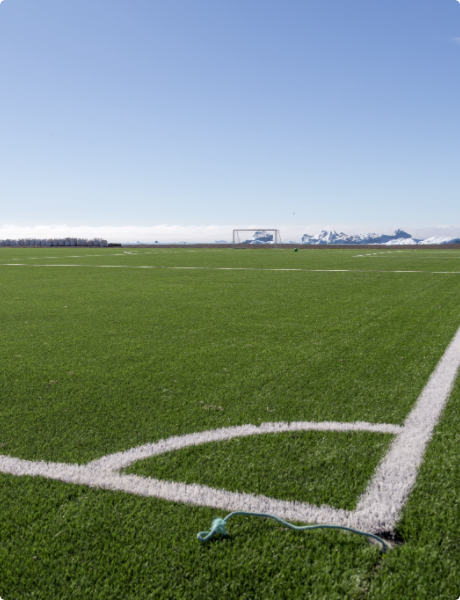
- Afrikaans
- Arabic
- Belarusian
- Bengali
- Czech
- Danish
- Dutch
- English
- Esperanto
- Estonian
- Finnish
- French
- German
- Greek
- Hindi
- Hungarian
- Icelandic
- Indonesian
- irish
- Italian
- Japanese
- kazakh
- Rwandese
- Korean
- Kyrgyz
- Lao
- Latin
- Latvian
- Malay
- Mongolian
- Myanmar
- Norwegian
- Persian
- Polish
- Portuguese
- Romanian
- Russian
- Serbian
- Spanish
- Swedish
- Tagalog
- Tajik
- Thai
- Turkish
- Turkmen
- Ukrainian
- Urdu
- Uighur
- Uzbek
- Vietnamese
artificial turf construction
Nov . 16, 2024 12:23 Back to list
The Art of Artificial Turf Construction
Artificial turf, often referred to as synthetic grass, has gained significant popularity in recent years, reflecting advancements in technology and the growing need for low-maintenance landscaping solutions. Whether it’s for residential lawns, sports fields, or recreational areas, the demand for artificial turf construction has surged, and understanding the process involved is essential for anyone looking to invest in this sustainable option.
Understanding Artificial Turf
Artificial turf is made from synthetic fibers designed to resemble natural grass. It offers various advantages, including lower maintenance costs, durability, and consistency, which makes it an attractive choice for numerous applications. From professional sports stadiums to residential backyards, artificial turf provides a versatile solution that can withstand different environmental conditions and usage levels.
Planning the Project
Before commencing the construction of artificial turf, careful planning is crucial. The first step involves evaluating the area where the turf will be installed. This includes assessing the soil type, drainage patterns, and any existing vegetation that needs to be removed. A well-prepared site is critical for the success of the installation, as it directly influences the durability and performance of the turf.
Preparing the Site
The next phase of artificial turf construction is site preparation. This typically involves
1. Clearing the Area All existing grass, weeds, and debris must be removed to create a clean foundation for the synthetic turf. In some cases, heavy machinery may be required to expedite this process.
2. Grading the Surface The ground needs to be graded to ensure proper drainage. A well-drained surface prevents water pooling and extends the lifespan of the turf. This might involve adding or removing soil to create a gentle slope.
artificial turf construction

3. Installing a Base Layer A compacted base layer, usually made from crushed stone or gravel, is then laid down. This base provides stability and assists with drainage. It’s imperative that this layer is thoroughly compacted to minimize settling over time.
Installing the Turf
Once the base is prepared, the next step is the actual installation of the artificial turf. This process can vary based on the type of turf being used, but generally includes
1. Rolling Out the Turf The synthetic grass rolls are laid out over the prepared base. Care should be taken to align the blades of grass in the same direction for a more natural appearance.
2. Seaming the Joints Where two rolls of turf meet, seaming tape is often used to bond the edges together. This ensures a smooth transition and minimizes visible seams.
3. Adding Infill Most artificial turfs require an infill material, such as rubber granules or silica sand, to provide stability, cushioning, and to help the blades stand upright. The infill also plays a role in the turf’s overall performance, allowing for effective drainage and temperature regulation.
Finishing Touches
After installation, the final touches include brushing the turf to evenly distribute the infill and enhance the aesthetic appeal. Additionally, proper maintenance practices should be established to prolong the life of the turf. Regular cleaning, occasional infill replenishment, and inspections for damage are vital to keeping the turf looking vibrant and functional.
Conclusion
The construction of artificial turf is a meticulous process that requires careful planning and execution. By understanding each step—from site preparation to installation and maintenance—homeowners and facility managers can ensure a successful project that meets their needs. As synthetic grass continues to evolve, its role in landscaping and sports fields remains significant, providing an excellent alternative to natural grass while promoting sustainability and reducing water usage. Artificial turf construction is not just about laying down grass; it’s about creating a durable and aesthetically pleasing environment for years to come.
-
The Benefits of Artificial Turf for Indoors
NewsJul.15,2025
-
How Artificial Grass Suppliers Ensure Quality Products
NewsJul.15,2025
-
Artificial Grass and Pets: A Space for Relaxation
NewsJul.08,2025
-
Balcony & Outdoor Decoration with Artificial Grass
NewsJul.08,2025
-
Best Indoor Artificial Grass for Home
NewsJul.07,2025
-
Best Pet Turf for Dogs: Safe & Durable Artificial Grass Options
NewsJul.07,2025
Products categories









